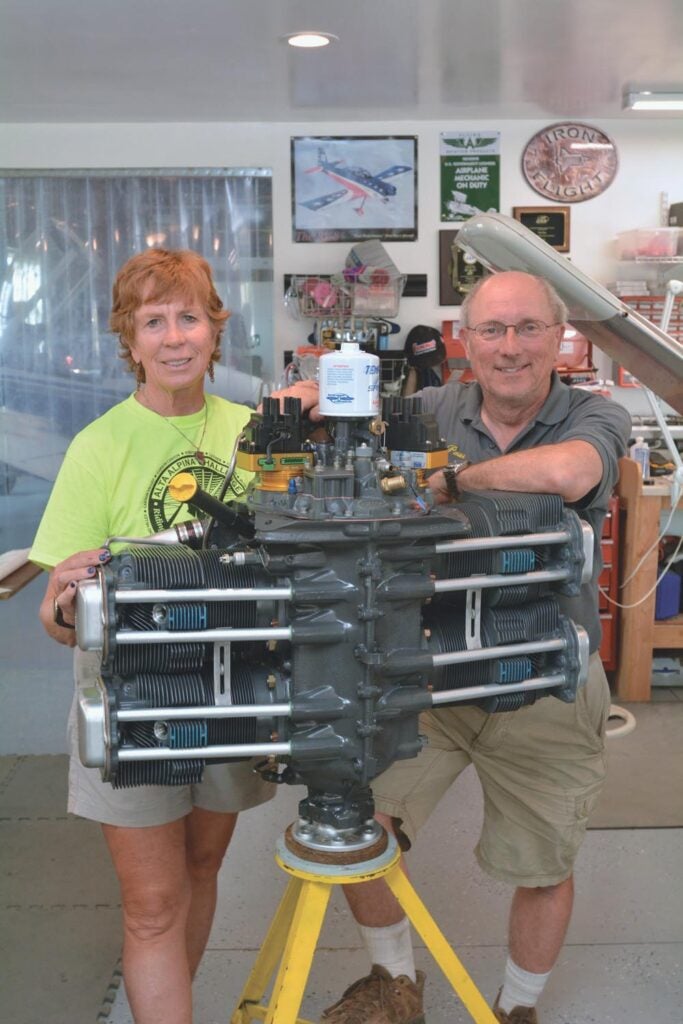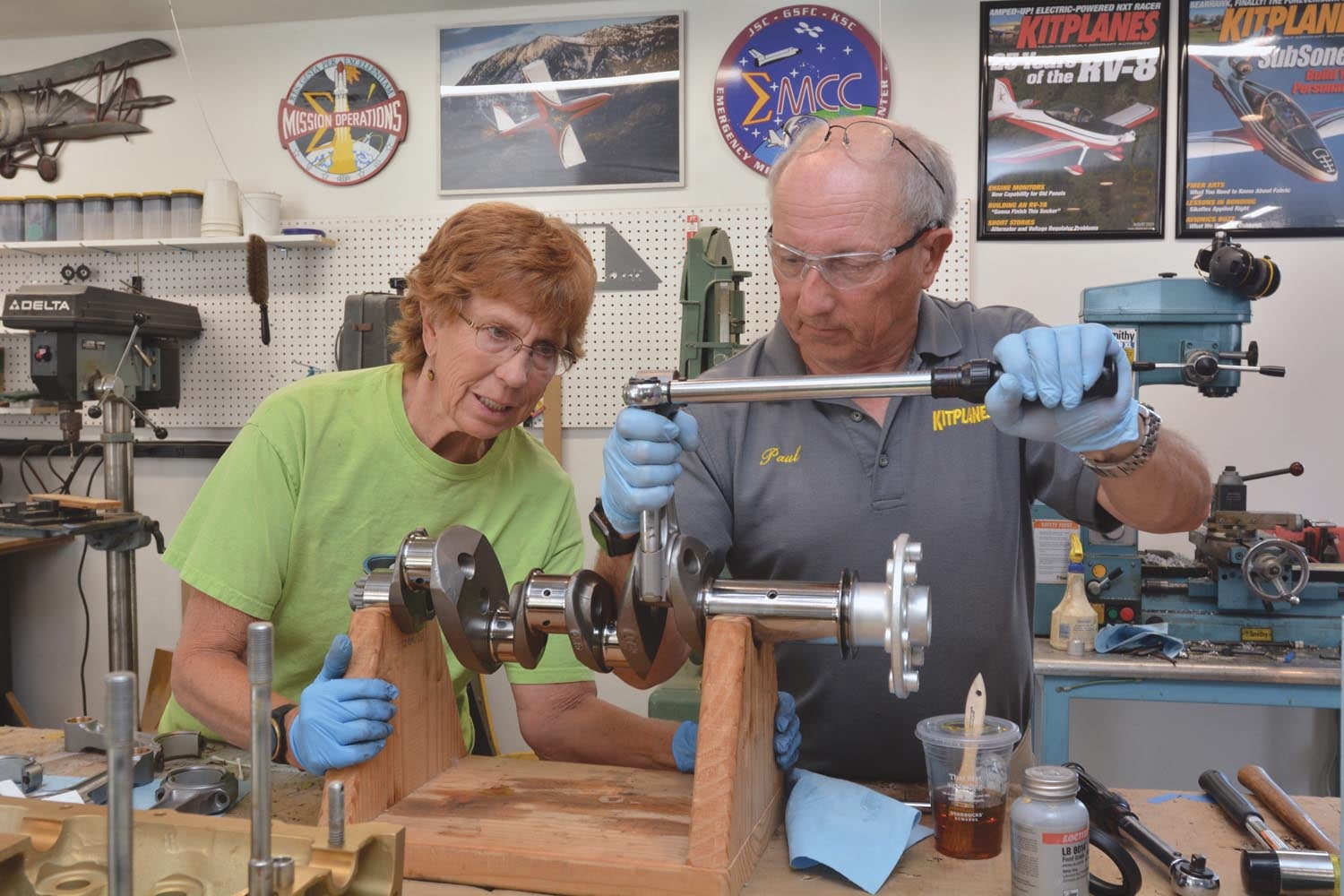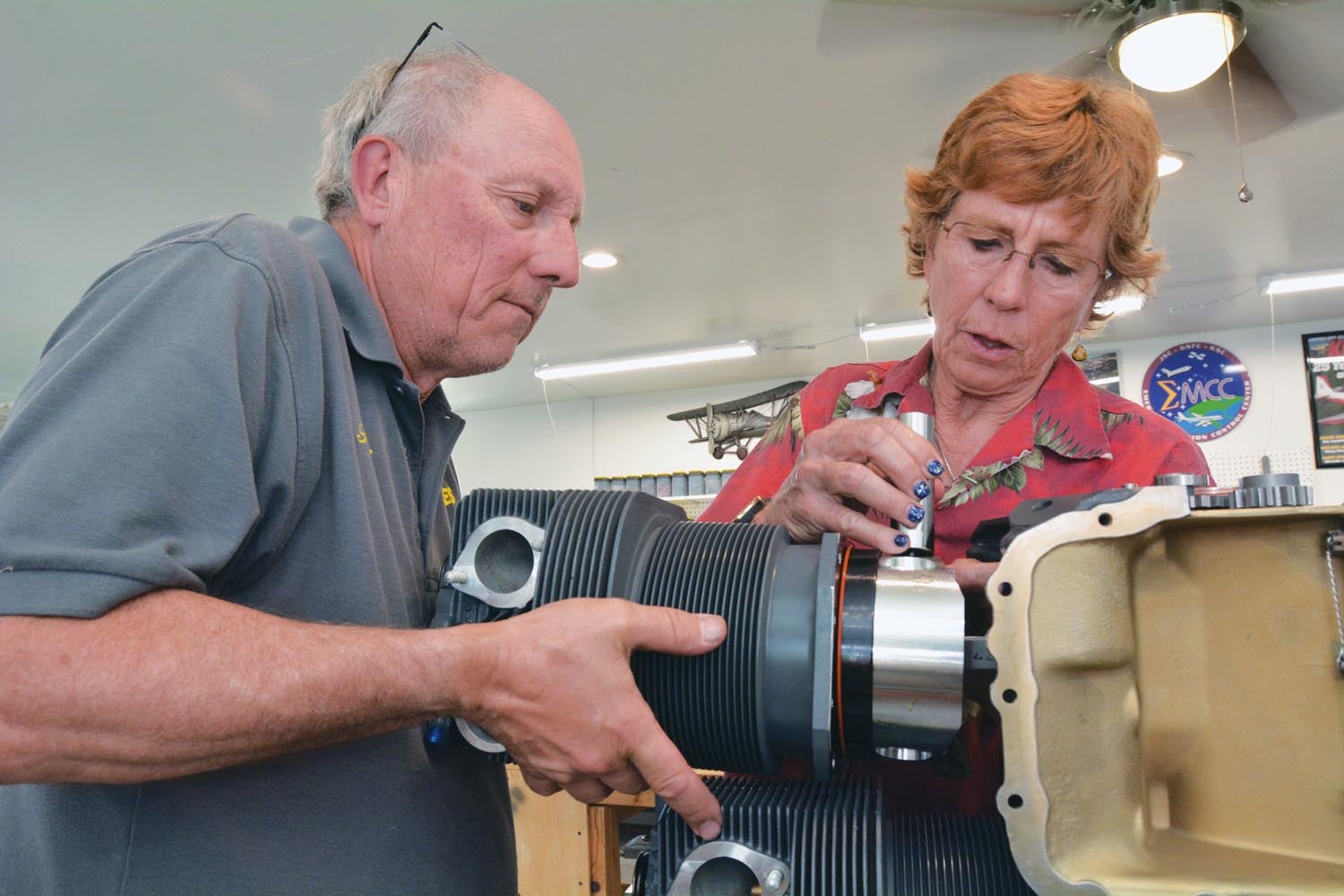
On the back of my FAA mechanic’s certificate, there is a portrait of a man who most don’t know, but he was as important to the first airplane flight as the Wright Brothers themselves. Charles Taylor, the Wrights’ mechanic, designed and built the first successful airplane engine, a pretty important fork in the road of human development. At 12 hp, it was hardly a major powerhouse. But it ran long enough to get the brothers airborne and served as the basis of countless engines to come.
It has been said that the 1903 Wright Flyer was the first homebuilt and by modern definitions, that fits. Not only did they design and build everything in the airframe for their own entertainment and education, they had that first engine built from scratch as well. I’d say that they definitely met the “51% rule”! Today’s homebuilders don’t have to build their own powerplants as part of that majority portion, although I’d be impressed if they did.
The early days of homebuilding were to a large extent about having an airplane without having to pay what it cost to buy a certified machine. You know what they say about copper wire—it was invented by two homebuilders arguing over a penny. Homebuilt aircraft were mostly wooden or rag-and-tube affairs created from plans or the builder’s imagination. They were often powered by whatever engine they found in the back of the hangar—or barn. It was extremely rare to find a homebuilt with a new engine. Finding and rebuilding a motor was as much a part of the build as sewing your own upholstery—or buying a boat cushion at the marine store. Most early designs used the low-power engines popular in the day: Continental’s A-series or the O-200, perhaps a Lycoming O-235. A big spender might splurge on an O-320.

Then the Change
Recycled engines for homebuilts held for a long time. When I began building my RV-8 in the early 2000s, my plan was like everyone’s—find a good experienced motor, clean it up and hang it on the nose. The Grumman I was flying had an upgraded motor that had been built from a core by a local engine shop, so I had no experience with “new” engines anyway. But as I was working on the airframe and researching powerplants, I found that there were a number of shops that would build an engine from all new parts—Lycoming, ECi and Superior all sold complete engine kits in those days—and if you added up the cost of the parts and labor, it was not much more than you’d spend for a core and an overhaul. Yes, those were different days.
With those economics in mind, a new engine made sense. So I placed an order with Long Island-based Mattituck, mostly because I would pay no sales tax in Texas (where I lived at the time) or New York on the purchase. Shipping was about $200. Plus, the company was offering a builder-assist option—I got the chance to fly up and help build my engine, so the experience and education boxes could be checked as well. Mattituck had an excellent reputation. It was a no-brainer.
But a lot has happened in the engine market in the ensuing 20 years. Prices of components went up. Then Lycoming stopped selling engine kits, possibly because they realized that they were losing a significant portion of new-engine sales to the excellent build shops around the country. ECi started having troubles and then Superior went bankrupt for a while. ECi was absorbed into Continental, which changed its approach to the Experimental market.
Lycoming did what most sole-source companies do and raised prices. In a very limited, many would say “boutique,” engine industry, it became harder and harder for the three manufacturers of Lycoming parts to find shops to make the raw castings or billets for those parts and prices kept going up. Remember that by and large, all of the “Lyclone” parts you will find are PMA’d and can go in a certified engine—so there’s added expense in paperwork right there.

The Next Big Turn
When the early 2020s hit, the COVID-era economic calamities hit the small airplane engine industry extra hard. Production ceased, then when it resumed (slowly) shipping costs rose astronomically. This kicked off a round of inflation to the point where new engine prices are more than most people were spending on an entire homebuilt airplane back in the ‘90s (when built with an experienced engine). I’m an engineer, not a businessman or economist, so I can’t speculate on actual causes for the inflationary pressures—but the effect is that many have found themselves priced out of the new engine market and in a culture that has developed around “new airplane, new engine” the past two decades, they feel that they have to abandon their projects—or the hope of a project.
But wait! History has a way of looping back on itself every generation or two and we are seeing more talk of people rebuilding cores found in barns or the back of hangars. Some are even taking “good, flying” engines off of old airplanes and bolting them on the front of new airframes. What’s old is new again—in more ways than one. Back are the days when it is acceptable to look for a bargain motor that can power your new airplane for many years—if not your flying lifetime.
Let’s do the math. Aside from the first year or two of airplane ownership, when Phase I has you flying frequently and the newness of owning an airplane you built hasn’t yet worn off, most folks probably fly less than 100 hours a year. Sure, some builders boast flying 300 or more hours every year, but they’re in the minority. If you bolt a 1000-hour-old motor on your homebuilt when you are 60 years old (a median age for homebuilders) and fly it to TBO, you have 10 years of use. And you might be done by the time you’re 70 anyway.
Because of modern technology, metallurgy and instrumentation, most small Continentals and Lycomings go to (or over) TBO these days. Rare is the sudden catastrophic failure and most engine stoppages are related to lack of fuel getting to the engine. If you do your homework on that barn find, scope it carefully, look into the history and give it some good TLC. It Is likely to be all the power you need for many years of enjoyable flying. In our household, we fly a lot of time over inhospitable terrain and most of that is with “used” engines—even if we started with new ones, they are used after a few hundred hours.
New engines are great—there is no dirt or oil when installing them, you can say that you ran it from the start and know every minute of its history and there is the pride of ownership. But with prices going the way they are, used or rebuilt engines are a significant opportunity for those on a budget to get in the air and enjoy as much flying as possible without having to worry about the cost of fuel because, uh, you didn’t start by paying too much for an engine. What’s old is new again, it seems—and old might well be worth a look.














Like Paul at Mattatuck, I built my engine at Superior’s Assist Facility. Great learning experience and prepared me for engine maintenance. Then Superior recalled and chopped up the crankshaft and jugs and all I was able to salvage were accessories, crank case and oil pan. Rebuilt it as Lycoming IO-390.
Using a barn find engine (or equivalent) lets you fly phase one without having to worry about a proper break-in for that new engine, avoiding glazed cylinder walls and rings. I will be installing a TBO enigine on the Woody’s Pusher that I’m rebuilding for it’s first flights. THe engine has been sitting for close to ten years now, but if it passes muster on startup, I’ll fly it as is and rebuild it after the aircraft has proven it’s self. According to Mike Busch, engines don’t suddenly fail due to rusty cams, etc. I expect to get an easy 100 hours from it. If I’m lucky, I’ll find another old sitting around engine to rebuild while I’m flying this one, then can just swap them and keep flying!
Another great article for aspiring builder. I built a RV8 and all RVs are designed around the Lycoming engine. Do you have any opinion of using an equivalent Continental power on an RV? I’ve searched the various aircraft salvages and they seem to have a lot of Continentals for reasonable prices while used Lycomings are very costly. I asked this question on Vans AF but I think the tribe is narrow focused on Lycoming engine only
Great article as we all have come to expect. Building my engine for Miss Sandy (RV-7) paid off with experience that serves me even today as a Tech Counselor. Learning is a part of the process that I never get tired of.
Looking forward to next chapter…